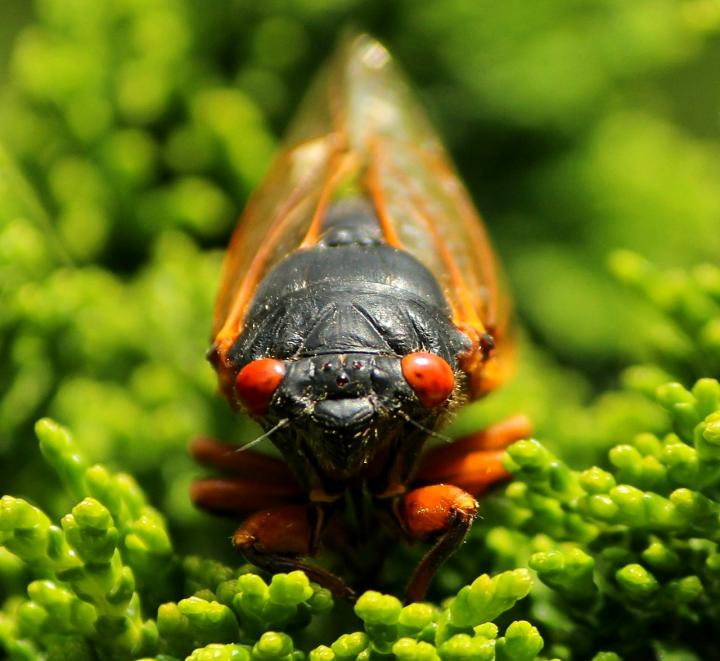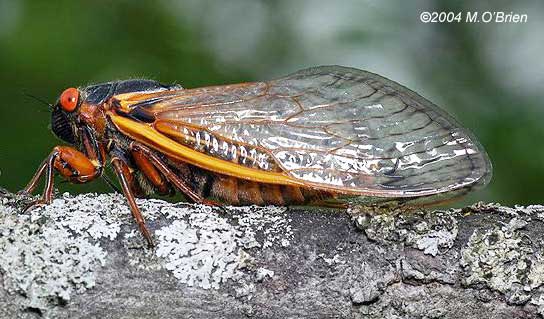





 Photo by Pixabay
Photo by Pixabay
Cicadas do not have red coats like the colonial British soldiers had, but many sport red eyes and appear in large numbers.
These large flying insects with broad heads and clear wings are often mistaken for locusts, but are more closely related to treehoppers and lack the large hind legs found in the majority of grasshoppers and locusts.
Cicadas are grouped into two main types. The “nonperiodical” or “annual” type are found in many parts of North America and hang around each year in small numbers because they do not all mature at the same time. A species called the dog-day cicada starts singing during the Dog Days of summer (July 3—August 11), the hottest and most unhealthy days of the year.

Periodical cicadas, on the other hand, are found in the eastern half of North America and mostly mature together as adults during a multiyear cycle. Juvenile cicadas spend their time underground, sipping root juices; after 13 or 17 years (depending on brood), thousands of these nymphs come out of the ground (usually at night) and climb trees and shrubs to molt into adults. (You can sometimes find the shed skin of a cicada nymph clinging to a tree trunk.) After a few days, male cicadas start singing loudly in daytime choruses to impress their female counterparts. After mating, lady cicadas will lay eggs in bark or twigs or in the stems of weeds and grasses. When the eggs hatch in midsummer, the nymphs will drop to the ground and burrow into the soil. They’ll spend many years underground as they develop.
Cicadas do not sting or bite (unless they mistake you for plant food), although the sheer numbers of adults can be a nuisance. The females may damage trees and shrubs as they lay their eggs in slits they make in twigs. Although damage to older plants usually isn’t severe, young trees and shrubs may be in jeopardy if many of the insects suck plant juices from the same plant. If you expect an emergence, it’s best to cover young woody plants with screening material, such as mosquito netting, beforehand. Adult cicadas will be evident for about 5 or 6 weeks; by the time the nymphs hatch, most adults will have died.
There are about twelve 17-year broods and three 13-year broods of periodical cicadas, each with different ranges, although the regions may overlap. The big news for 2016, as far as cicadas go, is that Brood V of the 17-year periodical cicadas (genus Magicicada) is emerging this spring in an area that runs from eastern Ohio to a good part of West Virginia, with appearances also in southwest Pennsylvania, westernmost Maryland, a tiny sliver of northwest Virginia, and a very tiny area on Long Island, New York. If you live where these insects are appearing, we’d love to hear about your experiences. Send us a comment below!
~ By Heidi StonehillYour Old Farmer's Almanac editors occasionally share our reflections, advice, and musings—and welcome your comments. too.
Copyright © www.100flowers.win Botanic Garden All Rights Reserved